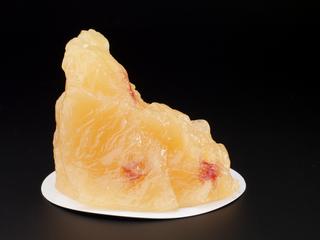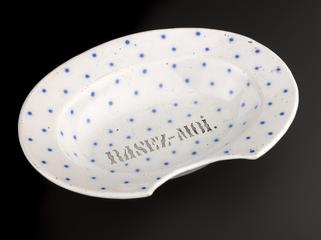
Microbiological bench with stool
- PART OF:
- Items from MRC Common Cold Unit
- Made:
- 1941 in United States
Microbiological bench with stool, part of the original laboratory fittings of the Harvard Hospital, later used by the Common Cold Research Unit, American, 1941
The Harvard Hospital was established in Salisbury, England, in 1941. It was a collaboration between Harvard University, the American Red Cross, and the UK Ministry of Health. Headed up by Dr John Gordon, the hospital was formulated as a way for the United States to provide a helping-hand to Britain in the war before the former had officially entered the Second World War. The “pre-packed” 125-bed hospital was planned to treat and investigate infectious diseases in Britain. There was a particular interest in studying the transmission of communicable diseases between civilian and military population. The Ministry of Health was concerned that overcrowding in air raid shelters could cause civilian epidemics that could then spread to troops.
Everything for the Harvard Hospital was manufactured in the US and transported across the Atlantic in convoys guarded by warships. 22 prefabricated buildings were shipped to England in 250,000 pieces on 30 ships. These buildings served as hospital wards, laboratories, offices, and staff quarters. Clinical and laboratory equipment, like the microbiological bench and stool, were transported in the same way. The hospital was staffed by Harvard doctors and laboratory technicians and American Red Cross nurses; there were ten physicians, sixty-two nurses, six technicians, and eight administrative staff.
The Harvard Hospital officially opened on 22 September 1941. The hospital was frequently referred to by Dr John Gordon as a ‘freelance unit’ because it was mobile enough to travel wherever and whenever an epidemic might strike. The Unit investigated infectious outbreaks across the UK, using their laboratories to examine cases of scabies, typhoid fever, and tuberculosis.
When America entered the Second World War, the hospital was transferred over to the US Army. A blood transfusion centre was established at the site for the use of allied troops. The laboratories were used to provide serotyping and cross-matching services.
Following the war, the hospital was transferred to the Medical Research Council who, in collaboration with the Ministry of Health, set up the Common Cold Research Unit (CCRU). The CCRU carried out clinical and laboratory research on the common cold from 1946-1990. To study how the common cold was transmitted to humans, the CCRU conducted clinical trials on volunteers. During a 10-day experiment, volunteers would stay in holiday homes and be quarantined from the outside world. In the double-blind trial, some of the volunteers were inoculated with the cold virus via nasal drops, while others received a placebo. Their symptoms were observed and recorded by staff. The work done by the CCRU was pivotal in identifying the viruses that cause the common cold and discovering how it is spread between humans.
Details
- Category:
- Public Health & Hygiene
- Object Number:
- 1990-84/1
- Measurements:
-
overall: 750 mm x 690 mm x 2310 mm,
- type:
- bench
- credit:
- MRC Common Cold Unit




